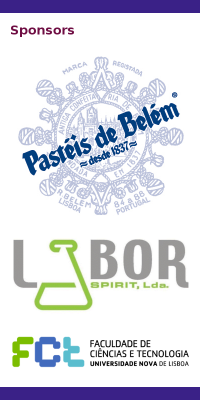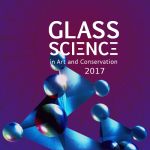History and Scope
History
A successful conference was organised in Portugal in 1999 under the title "Glass, Art and Science". As noted by the participants at the time, the conference demonstrated a need for the international glass community to share knowledge and insight across the barriers which all too easily separate science and technology from art, conservation and design.
In 2005 the first “Glass Science in Art and Conservation” congress took place in Lisbon, aiming to create a focus on the applications of glass science in two areas: art and conservation.
The second “Glass Science in Art and Conservation”, congress took place in Valencia (Spain) in 2008. The congress explored a wide spectrum of issues in this field, examined significant developments in the science of glass that could show the art and conservation communities about innovative possibilities, and provided an opportunity to discuss practical problems and the ethical dilemmas of intervention facing conservators.
In cooperation with the Fraunhofer Institute for Silicate Research in Wuerzburg and the Bronnbach Monastery, the International Convention Centre for Cultural Heritage Preservation IZKK, the third GLASSAC-Conference was held in the Bronnbach Monastery near Wuerzburg, Germany, in 2011. The central theme was: "Innovative technologies in glass art, design and conservation from the 19th to the 21st century - the role of the sciences", and once more it represented an international forum, where glass experts exchanged their latest trends, state-of-the-art experiences, and solutions for certain problems.
In 2014, GLASSAC and SGT conferences joined their forces in Durham and York, England. This conference, like previous conferences in the GLASSAC series, was dedicated to breaking down barriers, building bridges, and allowing us to share our glassy passions with experts from other strands. Professionals met one another in mutual respect and talked to one another in plain language, so that together all could learn.
For the conference of 2014, David Martlew wrote:
"The glass community world wide embraces many diverse strands of glass expertise. This conference in September 2014 is designed to weave together those diverse strands to create a web of knowledge and experience which transcends barriers and divisions.
We are so different. Scientists and Art Historians, creative Artists and inspired Designers, Archaeologists and gritty Industrialists, Engineers and Conservators of historic glass artefacts - the list is seemingly endless. But we are united by our obsessive fascination with glass.
Sadly our community is blighted by the legendary Curse of Babel. Each strand of glass expertise develops its own jargon, method of speaking, circle of knowledge. Unconsciously we form inward-facing groups. It’s hard to cross over these artificial barriers and share our enthusiasms and perplexities with colleagues from other strands. All too often, we don’t understand one another. Our creativity and our achievements are thereby diminished.
This conference, like previous conferences in the GLASSAC series, is dedicated to breaking down barriers, building bridges, and allowing us to share our glassy passions with experts from other strands. For once, let’s meet one another in mutual respect and talk to one another in plain language, so that together we may learn.
So the scope of GLASSAC14 embraces all strands of glass knowledge, celebrating those occasions when one area of glass expertise has collaborated with and been of help to another different area. And we invite Authors to contribute posters and exhibitions from the growing points of their particular strand of glass passion. Don’t wait for your endeavours to become stale and old - bring work-in-progress as well as finished achievements, experiences which raise questions as well as those which provide answers."
GLASSAC 2017 comes back to Lisbon, and awaits to become another successful experience, and to once more bring together works-in-progress as well as finished achievements, experiences which raise questions as well as those which provide answers, to the reward of all the glass community in Science, Art and Conservation fields.
Scope of the Conference
GLASSAC is an international meeting that tries to involve the chemical, physical and biological sciences with art, archaeology and history of glass artefacts.
So the scope of GLASSAC 2017 embraces all strands of glass knowledge, and invites authors to submit their contributions to a wide range of fields of interest around glass.
Topics
(The topics will include but are not restricted to)
- Archaeology/Archaeometry
- Art
- Glass in Architecture
- Conservation
- Technical Art History
- History



